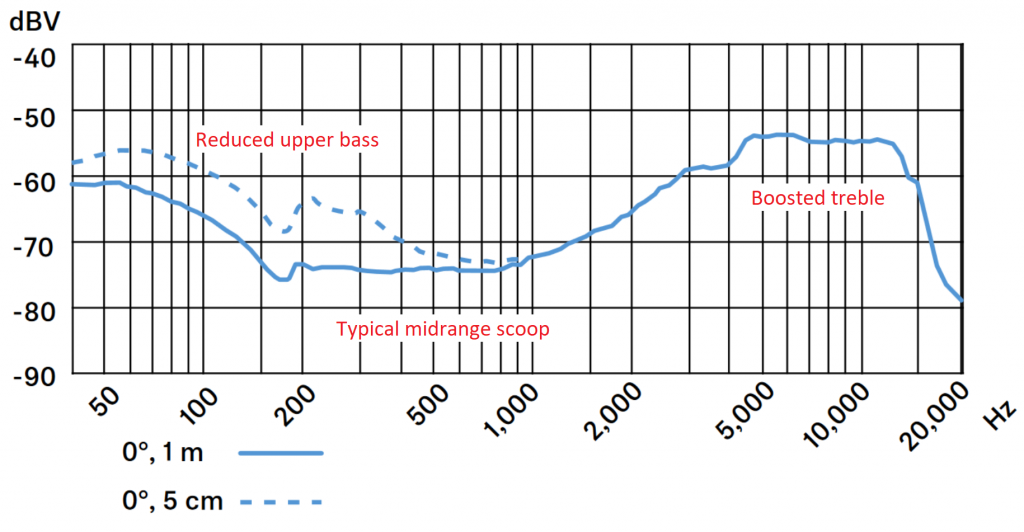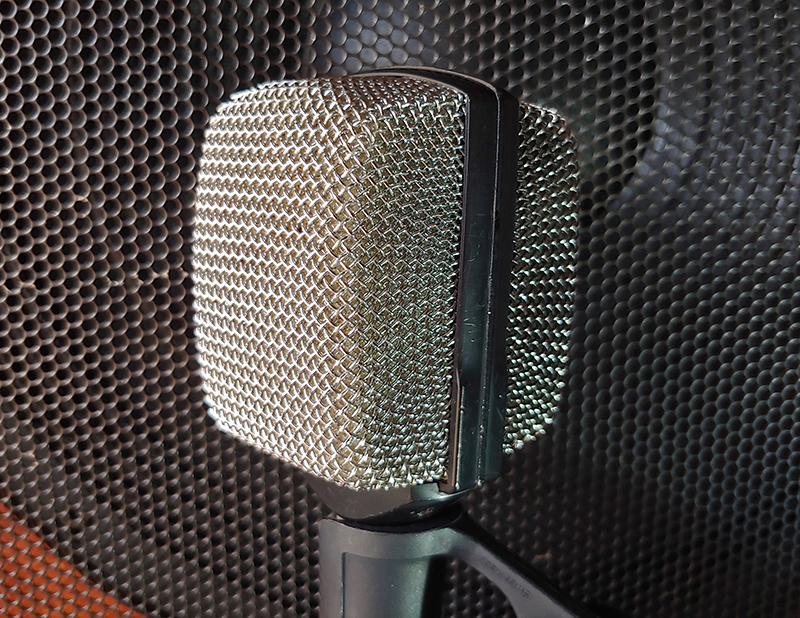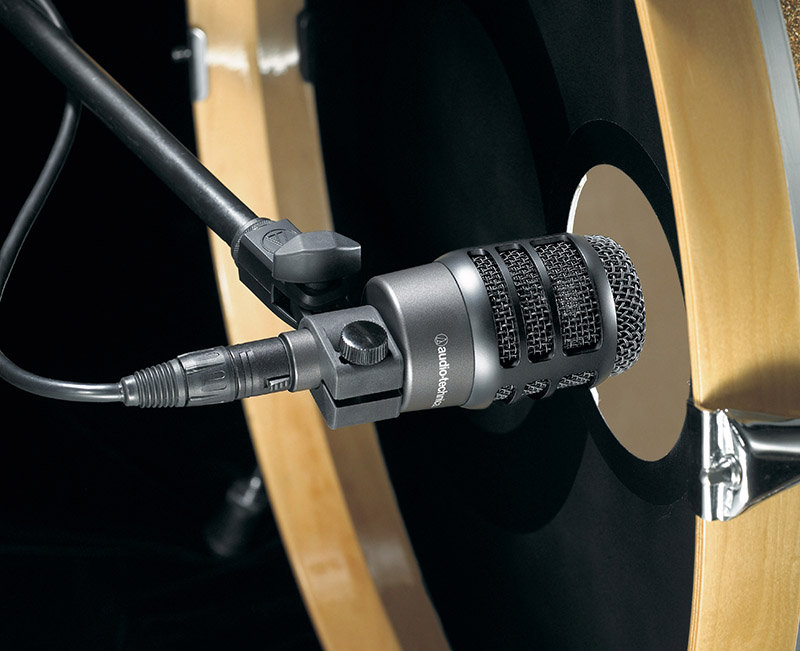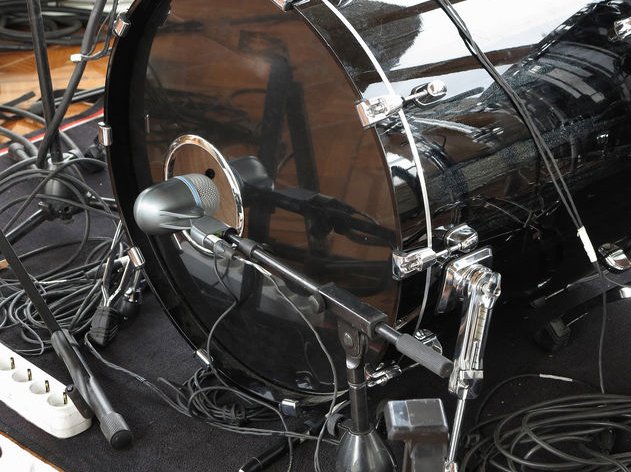Kick drum microphones are a subject that will split opinions. Some people like the Shure BETA 52A, while others like the Audix D6, Electro-Voice RE20 or the beyerdynamic M 88 TG. There are also still fans of the AKG D12, although working examples are getting rare these days. Those that do work are often quite different to each other – a few decades of kicking around will do that.
It’s easy enough to divide these mics into two discrete camps: those that have a colored frequency response, and those that are relatively flat. The pre-equalized models hope to achieve something useful – in theory, put the mic into position and it delivers a good kick drum sound straight off the bat. Sounds great, right?
In this article, I’ll be looking at some of the mics in question and examining why we might (or might not) want to use a pre-EQ’d kick drum mic.
Pronouced Effect
Let’s consider the case for pre-EQ’d (“contoured”) mics. The idea is that the mic has a particular response curve, and that curve will sound good when used on a kick drum – all you need to do is push the fader. I can see the appeal, particularly if one is seeking an easy route to good results.
There are lots of examples of such mics, but the trend is a large dip centered on the lower-midrange and often a boost toward the treble. Sometimes it’s a peak, sometimes it’s a high shelf. Each curve will give the mic its own personality – there are lots of comparisons available to listen to online, and I recommend having a listen to those.
Recently, I had the opportunity to make a direct comparison between a couple of mics (one heavily contoured, the other very flat) in a live situation. The venue’s mics pack contained a contoured mic normalized to <80 Hz content, the 150 Hz – 1 kHz region is around -10 dB while above 5 kHz is at +10 dB, resulting in 20 dB difference from one end to the other!
It’s one of the more extreme examples, but such numbers aren’t unheard of. The effect is very pronounced, though, and makes all kick drums sound very similar – instead of allowing the instrument’s own tonality to come through, the mic strongly imposes its own signature on the sound (Figure 1).

In action, the sound is as you’d expect: lots of “click” and a bit of low end. I can see that sound being useful in some situations; for example, heavy metal with lots of double kick action might benefit from the clarity that the treble boost would bring.
However, that wasn’t the sound I wanted for a 4-piece rock band. Pushing the fader to try to get more low end into the venue meant the treble became overbearing, and I had to resort to some “heroic” EQ to get a more balanced sound. Even with the treble cut down, the kick still lacked the punch that it ought to have – almost certainly due to the attenuation of the upper bass (and lower midrange) frequencies that’s baked into this particular mic.
Big Difference
After running with that for a while, I swapped in a different mic and flattened the EQ. It was a large-diaphragm condenser with a response that’s much flatter and extends very low into the bass region. The difference was immediately obvious – the overall balance was much improved, with more punch and weight (which I’d attribute to the flatter lower midrange and extended low bass, respectively).

Also, while the attack in the treble was present, it wasn’t overpowering the sound of what ought to be a bassy instrument. Without having to apply any EQ at all, I already had a much better sound.
Another example: I also tried a Sennheiser e 904 on kick. Now, it isn’t a natural choice for this application – the mic gets down to about 80 Hz before starting to roll off, and proximity effect can only help so much. Due to this, it tends to be used for snare/toms/brass where low-frequency extension isn’t so important.
The result, however, was still pretty usable: while it didn’t have the bottom-end extension of a more suitable mic, it did capture a very dry and punchy sort of sound, thanks to the linear response through the upper bass – a stark contrast to the contoured model.
I think there’s a faulty assumption behind the contoured mics, and it’s this: kick drums come in all shapes and sizes, and drummers tune their drums according to their playing style and genre. There is no single “kick drum contour” that will fit everyone, so what are we to do? Buy a mic for every genre? Sounds expensive.

The solution I’ve arrived at (and I must note that I’m not alone here) is this: use a flat mic with a neutral response. The idea is simply that if the mic captures the entire frequency range of the instrument, it leaves the engineer completely free to decide how the kick drum should sound to the audience. Starting with a clean slate, so to speak.
There are lots of engineers getting great results with mics that don’t have that extreme contour built-in, and that’s because they know when the contour is needed and (perhaps more importantly) when it isn’t. My suggestion to you, dear reader, is to give it a try some time – instead of a “scooped” mic, try something flat and see what you’ve been missing.




















